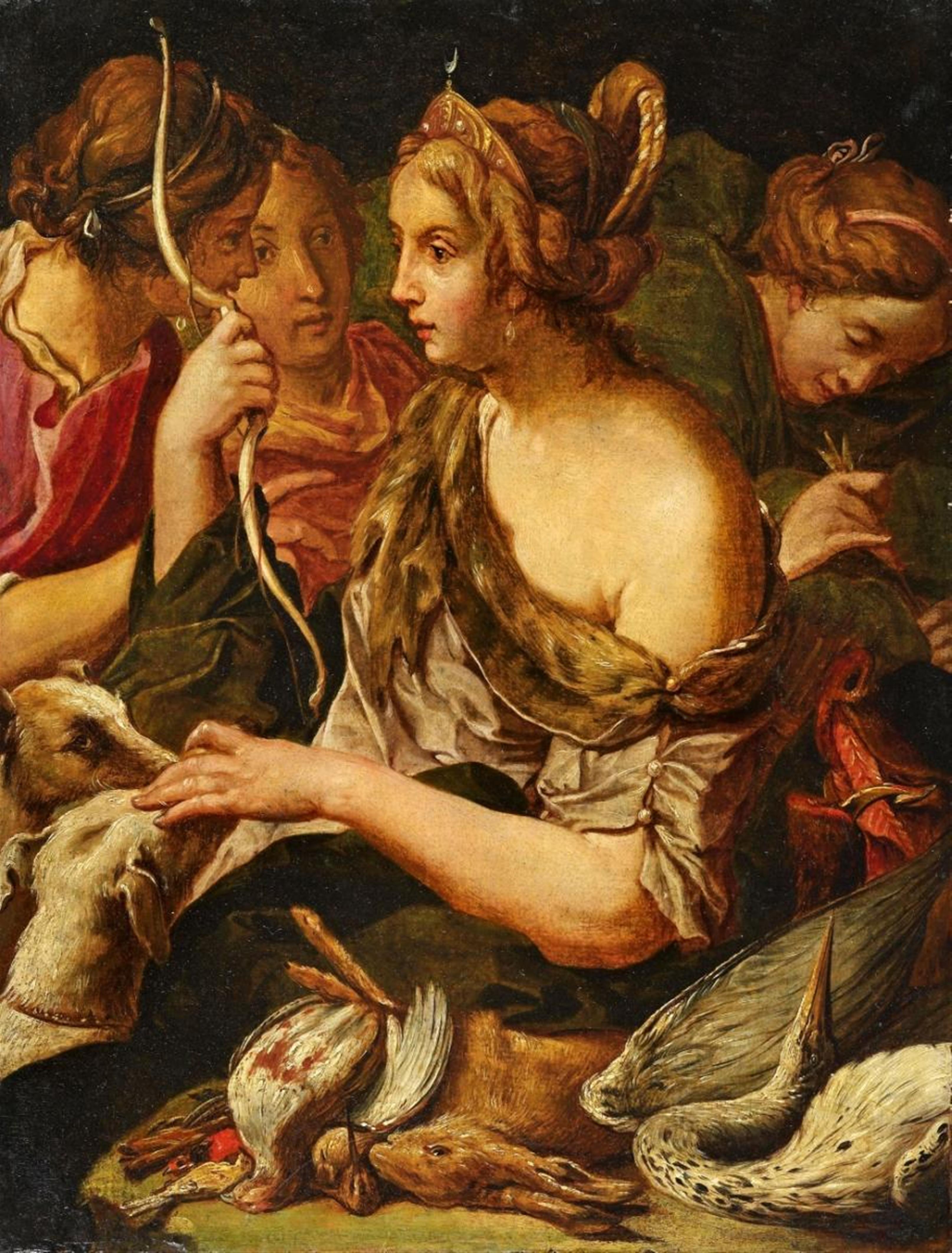Abraham Janssens
DIANA AND NYMPHS WITH HUNT QUARRY
Oil on paper, mounted on oakpanel. 32,2 x 24,5 cm.
Abraham Janssens visited Rome in 1598, with his return to Antwerp, he brought the earliest influence of Caravaggio´s style into Flemish painting. This small-scale painting dates from Janssens´ most productive period between 1600 and 1615. The central figure represents Diana, goddess of the hunt, depicted as half-figure, turning to the left, stroking the hound before her and holding a bow in her right hand. She is accompanied by three nymphs that surround her in a dense composition and that are partially hidden by the central figure. The game in the foreground, painted in a subtle manner, with its colourful yet dark tones harmonises with the composition of the painting.
This small painting by Abraham Janssens is a reduced, but accurate version of his painting „Diana and Nymphs with GAme“ in the Alte Pinakothek in Munich (inv. no. 13111, oil on panel, 122,5 x 93,7 cm), dated by Müller Hofstede around 1609. Another version by his own hand, painted on copper, is in the Nelson-Atikins Museum in Kansas City (inv. no. F99-3 / 40, 31, 5). This work is an exception in Janssens´s oeuvre as copies from his own hand are rare and he seldom used paper as support for his paintings. Joost Vander Auwera, who examined the original painting, has confirmed the execution as by Janssens himself and will include this painting as a work by Abraham Janssens in his catalouge raisonné.
We thank Professor Joost Vander Auwera (Brussels) for his assistance in cataloging this painting.
Provenance
Private collection, Germany.
Literature
About the painting in Munich cf. Justus Müller Hofstede: Abraham Janssens. Zur Problematik des flämischen Caravaggismus. In: Jahrbuch der Berliner Museen, XIII (1971), p. 208-303, p. 254-257, ill. no. 24.

